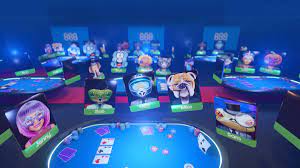Early S and G Poker Strategy
To be successful in a multi-table S and G event it is very important to set yourself up for success, either in terms of blind levels and/or time spent in the table. Blind levels are especially important because in the early stages of the tournaments the blinds are low and you can take a few hits and play, especially on the lower levels.
Once you have made it past the early stages and find yourself in the later stages of a multi-table S and G tournament it is time to open up your game and become more aggressive. The blinds will be very high and stealing them once you become a problem is one of the most important strategies in the early stages. In the case of a 6 handed game you should be looking to take everyone’s stack, while in a 9 handed game you want to try and steal the blinds from the button and blinds to start.
Once you have successfully taken a small part of the blinds and antes (when you have a stack worth 10 big blinds or more) you can open up your game and become more selective on the starting hands you play. Seven-card stud is a game where you will see premium hands from time to time, and in a game like seven-card stud you want to see the flop as often as possible. If you have a read on your opponent(s) and they are raising when you check, you should consider folding.
Seven-card stud is also a game where you can successfully “traps” players. If you spot a player which you think is weak, you can set a trap by playing strong hands. Of course this will all end up without your hand strong enough to take the pot, but you just want to set a small trap and take a small pot.
In the late positions you can adopt a more aggressive approach, and remember that you are not supposed to give your hand away for nothing. Bluffing, and slow play, should be used more application than in the early positions. In the late positions you can “allows” weak players to chase, or “sweep” in, taking a small pot if they do, in contrast to how they would have playedurus.
It takes a lot of time and effort to become a good player on the lower levels, especially when playing in a micro-stakes games. Again, take it from experience. Do not expect to be a good player and a star player overnight. Spend time studying your opponents and their habits, like if they check, you check, etc. Forget about how the pros are instructing you to play, and just play your poker.
If you wish to play micro-stakes games, I wish you to spend more time studying your opponents, and watching them. Watch what they do and their faces, their eyes, their gestures, everything. Even if you cannot read their hands, see if they are holding strong to their opponents draw-heavy boards, and see if their facial expressions tell a story in the loss. You are not going to learn much about winning poker playing skills unless you can spotting what the weak players are doing wrong, and more importantly, avoiding the strong players at your table. As pros say, spotting the bullpens.
This may not be a perfect world, but there are a few “slot deposit 30 bonus 30” out there who are serious enough to Mary (Myrd) raise her hooves for good measure, but too smart to let it pass, but also not too stupid to get off their behind and make a little money besides. Maybe we are observing a “wise guy” principle here – a good poker player should know his weakness and have the stones to stay in it, day or night, without giving a choot about his play. Maybe that is the case for you. Good luck at the tables!
